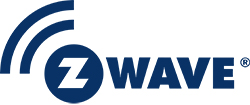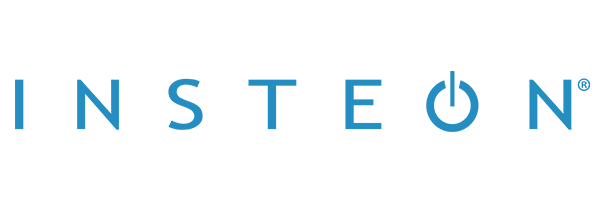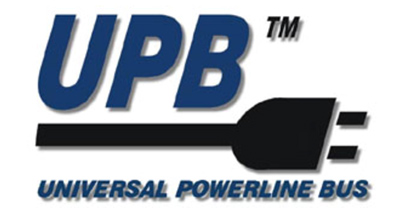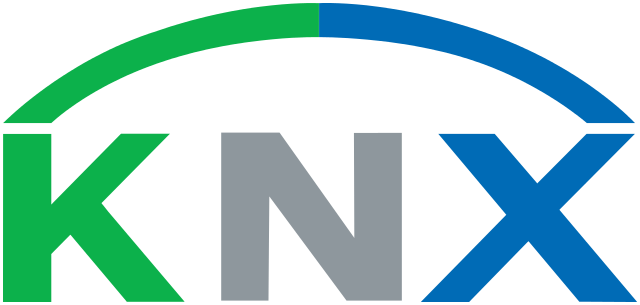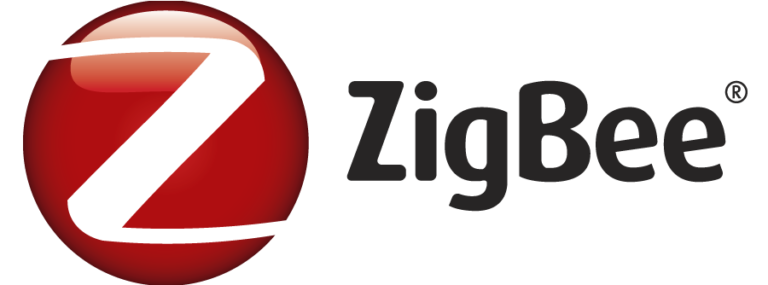Z-Wave
Z-Wave was developed by a Danish startup called Zensys.
It is a proprietary wireless communications protocol specifically designed for the needs of remote control applications and therefore all kinds of home automation devices. While using a low-power wireless technology it supports the communication via a mesh structure which means that several Z-Wave devices also act as a signal repeater and verify that the commands were sent successfully. This infrastructure provides a much more reliable way of transmitting data between all kinds of gadgets than for example the X10 protocol. It was built to operate on the 900Mhz frequency (in Europe it is 868.42 MHz) to avoid interference with the very crowded 2.4 GHz band which is used by Bluetooth and Wi-Fi. Unlike the latter Z-Wave is optimized for sending small amounts of data (100 kbps maximum) with low-latency instead of larger amounts of data with a bigger chance of packet loss. Devices built with that technology are normally communicating out of the box with each other right after they have been paired with the Z-Wave network. This is a process which is known through Bluetooth Devices that are paired with each other by exchanging certain number codes.
Meanwhile this protocol has become very popular in the home automation market and more and more manufacturers are hopping on the train. According to the official Z-Wave homepage there are currently 1000 products that are working seamlessly together.
The Z-Wave Alliance is a consortium of 250 companies that drive the further development of the technology and are allowed to create their own communication devices. In order to do the latter you will need to buy a license. Every product needs to be certified by the alliance upon release to the market which assures a certain quality control.
Nowadays the main company behind Z-Wave is Sigma Designs, a company specialized in semiconductors, who owns the intellectual property and is one of two manufacturers of Z-Wave chips.
Z-Wave Plus (500 Series)
The 5th Generation of the protocol features a lot of advancements including longer battery life, faster operation, better RF coverage and easier installation. Moreover, the certification process for the manufacturers to fulfil the requirements for Z-Wave Plus has become harder. Products need to stand a technological test directly from Sigma Designs as well as comply to certain marketing guidelines.
Applications and Devices
Z-Wave has basically become ubiquitous in the Home Automation world with use cases ranging from door locks and light dimmers to flood sensors and pet feeders. Here is a list of all devices and use cases that we know of:
- Contact Sensors
- Door/Smart Locks
- Fan Control
- Flood Sensors
- Garage Door Opener
- Home Automation Controllers (see our review)
- Irrigation Control
- Lighting: Control/Dimmers/Sensors/Switches
- Motion Sensors
- Pet Feeders
- Power Switches
- Programmable/Smart Thermostats
- Range Extender
- Smoke Alarms/Detectors
- Temperature Sensors
- USB Sticks (turns your computer into a Z Wave Controller)
Companies
ADT
ADT is mostly specialized in Home Security and is one of the market leaders in that area. The ADT Pulse is a very well known Home Automation Controller that works with all certified ZWave devices.
Website: https://www.adt.com
Aeon Labs
Based in Santa Clara (CA) Aeon Labs specializes in very specific products like Water Sensors, Z-Wave USB Sticks, Range Extenders as well as the so called Smart Film, a cutting-edge window cover technology that can replace your curtain.
Website: https://aeotec.com
Homeseer
Since its first product release in 1999 this company has become one of the biggest players in the Home Automation industry. The Hometroller product range consists of excellent Z Wave Controllers that provide unmatched protocol support and help to manage even the most complex scenarios.
Website: https://www.homeseer.com/
Leviton
Leviton specializes in electrical wiring devices, network and data center connectivity solutions, lighting energy management systems, and security and automation applications. In the Z-Wave environment it manufactures devices for very special-tailored use cases like a Ceiling Fan Control or Fan/Light Control combination.
Website: https://www.leviton.com/
Vera Control Ltd.
The Hong Kong based company formerly known as “Mi Casa Verde” is mostly known for their Z-Wave Controller product range. The VeraLite as well as the Vera3 are quite popular devices which is also reflected by the big support community that has evolved over the years in the Mi Casa Verde Forums. They have recently started to integrate their smartphone apps and controller operating systems (MiOS) with other smart home companies like Nest.
Website: https://getvera.com/
Zipato
The Croatian company Zipato is a relatively new player in the home automation market and it mostly known for its uniquely designed Zipabox , a powerful ZWave Controller.
Website: https://www.zipato.com/
Software
OpenZWave
Open ZWave is an Open Source Project written in C++ for people that want to create their own applications which can talk to ZWave devices without requiring too much in-depth knowledge of the Z-Wave protocol. It is an easy and inexpensive way to get started with home automation and dive deeper into the inner workings .
Website: http://www.openzwave.com/
Hardware
Razberry
The Razberry is a daughter card for the famous Raspberry Pi which extends this little Open Source Hardware playground with Z-Wave support. It is compatible with the old Raspberry Pi Model B as well as with the new Model B+. Moreover it should work together with Open Zwave since it is using the standard serial protocol.
Website: https://razberry.z-wave.me/
Technology Overview
- Low powered radio frequency communication on the 900 Mhz band
- Very reliable
- Low bandwidth
- Supports mesh networks
- Supports encryption
Advantages
- Encryption supported (AES 125)
- Very reliable
- Meanwhile a lot of products on the market
- Lots of manufacturers
- Growing community
- Easy to setup
- Quality control through Sigma Designs and the Z-Wave Alliance
Disadvantages
- Proprietary -> No public documentation (but there is Open Z-Wave)
- Quite expensive devices (Compared to X10 or UPB)
